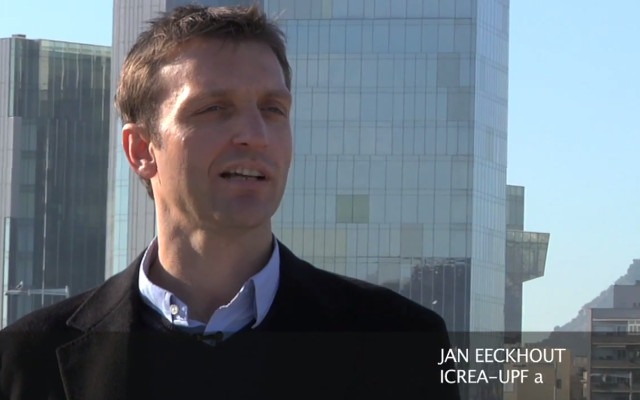faculty
Research Video: A Theory of Optimal Random Crackdowns

Although speeding is rarely studied by economists, it has great economic relevance. In the United States alone, speeding is a factor in 30% of all fatal automobile crashes, with an economic cost to society of more than $40 billion per year. Law enforcement units around the world face the challenge of deterring drivers from committing this costly and potentially tragic crime.
Professor Jan Eeckhout (ICREA-UPF and BSE), together with his co-authors Nicola Persico (NYU) and Petra Todd (University of Pennsylvania), has developed a model demonstrating the optimal use of random police crackdowns as part of an effective deterence strategy in law enforcement.
Crackdowns are intermittent periods of high intensity policing. The date, time, and location of the crackdown are publicized in advance.
Police in several countries, such as the Netherlands, Belgium, Germany, and Australia, use random crackdowns to deter speeding. It was during a trip to Belgium that Prof. Eeckhout started wondering if there was a rational explanation for the effectiveness of crackdowns on speeders.
"When I first learned about the announced speed controls in Belgium, I was struck with disbelief," Prof. Eeckhout explained. "How on earth can it be effective for the police to deter speeders by announcing controls? I found out that the police themselves did not really know either how it actually worked. They had some intuition based on the fact that the announcements had an effect on drivers' overall perception of that likelihood to be controlled, and from their trial runs they knew it did reduce the amount of speeding."
While criminologists use psychological theories to explain why random crackdowns deter people from committing a crime, Prof. Eeckhout’s model offers compelling rational evidence based on police and citizens’ incentives. He reasons that by concentrating all police resources on one road, high propensity speeders on that road know for sure that they will be monitored, and thus change their behavior to avoid a speeding ticket. Without the announced crackdown, speeders are less likely to slow down because the probability of being caught is limited by police resource constraints, which prevent them from monitoring all roads all the time.
Prof. Eeckhout tested his model on the Belgian case by introducing a hypothetical increase in the number of tickets that the police could issue.
"We were interested to know if increasing the number of tickets would increase deterrence on speeding," he said. "In conjunction with value-of-life estimates, our results indicate that at the current level of interdiction, the marginal benefit, in terms of statistical lives saved, is close to the marginal cost of interdiction. So the Belgian police are applying crackdowns in an effective and even optimal manner.”
The Belgian example shows that there is a rational, economic argument for employing random crackdowns as part of a policing strategy. The model can be applied to a variety of situations in which perceived police controls give citizens the incentive not to engage in criminal activity. Other examples are sobriety checkpoints to catch drunk drivers or raids on suspected drug traffickers in particular neighborhoods.
Analyzing law enforcement tactics from an economic standpoint provides a compelling counterpoint to the subjective risk assessments made by criminologists. “Having a methodology for estimating the deterrence effect of law enforcement strategies ensures an optimal use of police resources, ultimately leading to lower incidences of crime and a lower overall cost of crime for society,” Prof. Eeckhout explained.

Prof. Jan Eeckhout (ICREA-UPFand BSE) and his co-authors have developed a model demonstrating the optimal use of random police crackdowns as part of an effective deterence strategy.
Watch the video (05:16)
"A Theory of Optimal Random Crackdowns" (with N. Persico and P. Todd), forthcoming in American Economic Review.

